As you know, I wrote The Complete Book of Police and Military Motorcycles a few years ago. One of the things I found interesting was how these motorcycles categorized along national lines. Three nations stood out: The United States, Japan, and Germany. This blog (one of two or three) focuses exclusively on the German bikes and their derivatives.
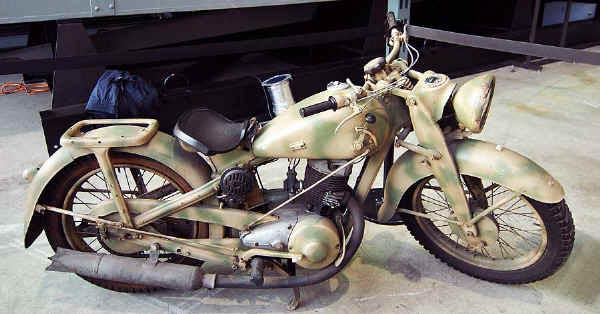
One of the more interesting military motorcycle applications occurred in the German Wehrmacht during World War II. In most other military motorcycle applications, the motorcycle has been used primarily as an escort or messenger vehicle. The Germans actually used motorcycles as infantry weapons. Each motorcycle in a German motorcycle battalion (that’s right, the Germans organized motorcycle units up to the battalion level!) carried three soldiers: A driver, a rifleman on the back seat, and a machine gunner in the sidecar. The Germans used these motorcycle units when they invaded Russia. By the time the Russian winter rolled around, they figured out this was not such a bright idea.
This is a BMW with a sidecar. This picture came from HP-Hommes in Germany.
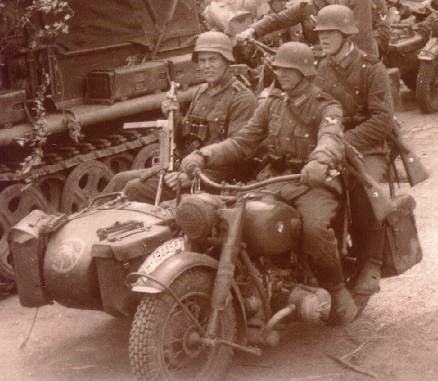
The Russians, realizing a war was coming in the late 1930s, purchased a handful of BMWs from a dealer in Sweden and secretly reverse-engineered the German machines in Moscow. The Russians actually fielded a copy of the BMW military motorcycle during World War II, so troops in Russia on both sides of the front lines were fighting atop essentially the same motorcycle.
After the war, the Russians continued to build these machines. The Russians shifted production to the Ural mountains, and the Russian BMW copies became known as Urals. The Russians continued to improve the machines, and after the collapse of the Soviet Union, the motorcycles were offered for sale to the public. Prior to that time, Russia sold Urals to eastern European and other third world communist nations.
You can buy these machines today in the United States, without the machine gun, and own a brand new World War II-era motorcycle. The Russians also make a civilian version. The civilian versions are available with whitewall tires and with or without the sidecar.
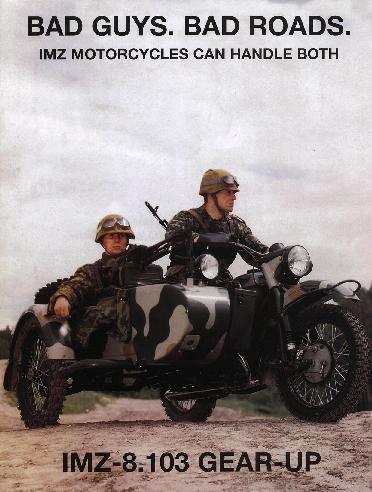
In the past, Ural has not been hesitant in showing their motorcycles in extreme applications. This is another photo from the Ural brochure. Ural has also showed motorcycles with rocket launchers, grenade launchers, and the 7.62mm PK machine gun.

I grabbed the next shot on a trip to China in 2001. Note the OHV BMW-clone engine. In 2001, China had several companies making clones of the older BMW-boxer engine bikes, including some with early-1930s-design flathead engines!
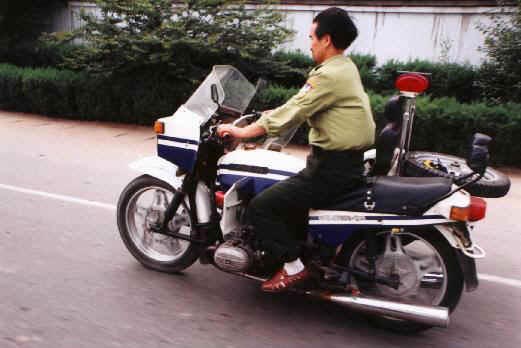
I travel to China on business regularly, and I noticed that you don’t see the Chinese BMW clones any more. The companies that manufactured them stopped offering them many years ago or went out of business, but I thought I would still some Chinese boxers plying the streets and alleys Shanghai, Guangzhou, and other spots. Nope. They’re gone.
In China, you can’t register a motor vehicle more than 10 years old, and if you have one and don’t turn it in to the government for destruction, they will come and take it from you. There are, I suppose, advantages and disadvantages to this approach. The disadvantage, obviously, is that there are no classic vehicle collectors or collections in China. The advantages are that it gets vehicles that don’t have the latest emissions control equipment off the street, and it stimulates the economy.
How about the country where the boxers originated? BMW is still going strong, and BMW police bikes (in many variants) are in service in both Germany and other parts of the world. The photos that follow show both vintage and current (in 2001) Beemers.
Back in the early 2000s, German police BMWs were green and white (they may still be; I haven’t been to Germany in a while). The BMW factory provides the bikes in a range of standard colors, and for an additional $400 per motorcycle (early 2000 pricing) they will paint the motorcycle any color already in the BMW system (for either their cars or motorcycles). Based on the research I did for Military and Police Motorcycles, I believed the then-current BMW R1100 RT-P to be the most advanced police motorcycle in the world. It had a range of officer comfort features, a torquey 1100 cc twin cylinder engine, and unlike all other manufacturers’ police motorcycles, an antiskid braking system. Every motor officer I interviewed for Military and Police Motorcycles spoke highly of this machine.

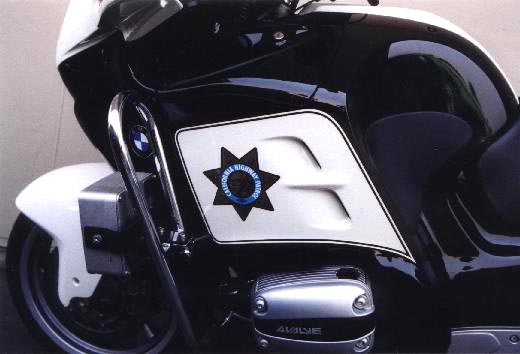
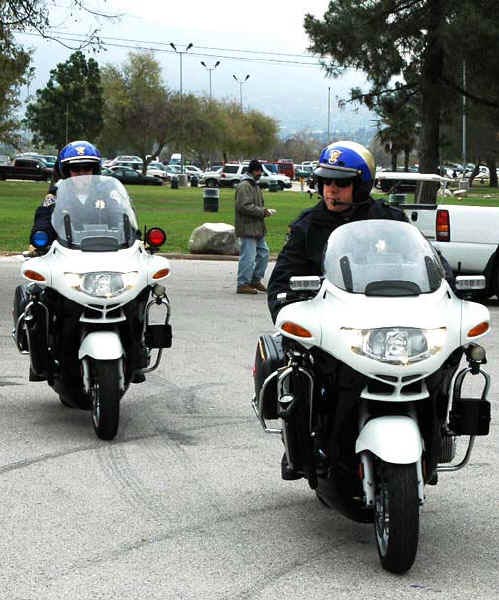
In the early 2000s, the BMW R1100 RT-P, in black and white, was used by the California Highway Patrol and many other U.S. police departments. If Harley-Davidson wasn’t nervous, they should have been. The BMW was a wonderful police motorcycle. BMW later upgraded this motorcycle to the R1150RT-P (with the 1150cc engine), and then the R1200RT-P (with the 1200cc hex head engine).
Here are more early BMW police motor photos…
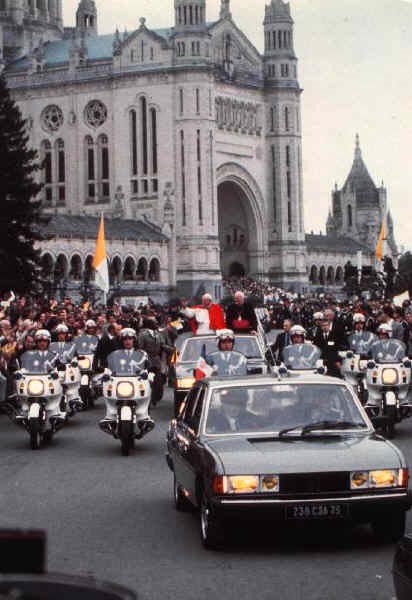
The photograph above, which came from BMW in Germany, shows the Pope in France a few years ago, accompanied by a group of earlier BMW police twins. BMW has been the dominant police motorcycle in Europe and many other parts of the world.
My friend Ben sent this next photo to me from Paris, France. This is a vintage photo showing the Gendarmerie from the presidential escort group.

This is Ben’s personal bike, a former French police BMW. It’s a 1977 R60/7, in a configuration never made available to civilians.
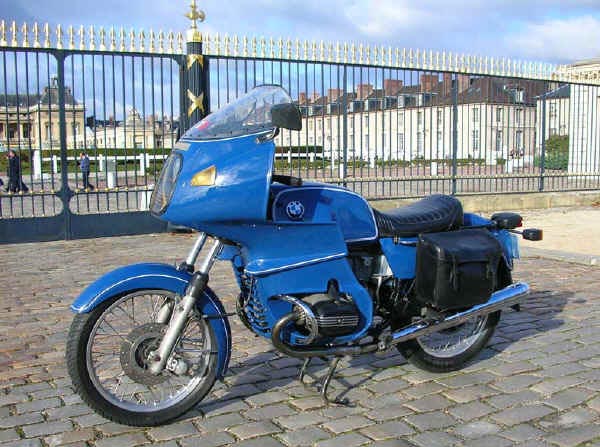
And folks, that’s a wrap for today. Watch for more in another day or two. This blog is already getting long, and we have enough vintage BMW police motors stuff for another blog or two.
Don’t forget to visit our Police Motors page and check out our other police motorcycle posts!
